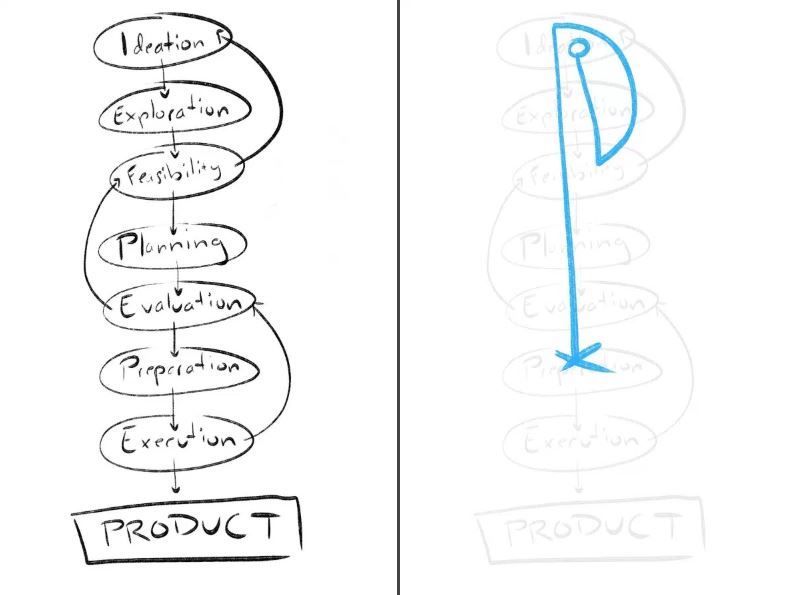My design process so far has been conducted in stages—idea, planning, preparation, etc.—each with a different type of evaluation or self-critique (see Fig.1 above). My original concept of aluminum sheet modeling was scrapped due to difficulty and cost in the early stages, while my current subject of jar terrariums has progressed smoothly to the preparation stage (see Fig.2 above).
Ideation is the selection of a concept. This is sometimes broken down into brainstorming, ranking, decision matrices, etc. For me it was rather simple, as the first idea of scrap aluminum came quickly and seemed reasonable. When I circled back, the idea was a momentary inspiration from seeing a variety of jars in my cupboard.
Exploration was the stage where I looked at the process involved in the project from a very rough perspective. For modeling, I took aluminum cans and cut them into sheets, trimming shapes from those sheets. For terrariums, I took what I had and researched similar projects online.
Feasibility was the critique stage of Exploration, where I reviewed what I had learned. Aluminum sheet modeling was discarded at this stage because of the difficulty of cutting the aluminum by hand (accurately) and the cost and design effort required to use a laser or water cutter. Terrariums passed this stage because of the accessibility of the materials and stories of similar projects online.
Planning is the stage of taking stock of my equipment, finding resources for the missing ingredients, and starting to layout sketches and diagrams of the project and the creation process. This was my stage as of last week’s post, Upcycle Progress: Jar Terrariums.
Evaluation is my name for the critique stage of Planning, where I consider the work to be done to ensure the tasks are realistic and achievable, and that the project has had limited scope creep. Problems at this stage may mean a loop back to Feasibility is required.
Preparation is my current stage, in which I am gathering equipment, consulting experts (in this case reading additional reports and instructions from people who have worked on similar projects), scheduling with the tools/facilities I need, and finalizing my project budget. At the end of this stage I am ready to create!
The final stage that results in the end product is Execution. This is the actual craftsman hours spent in the shop building the Upcycled piece, in my case assembling the terrariums. If obstacles (beyond a simple change in equipment or additional hours required) are encountered in this stage, a loop back to Evaluation may be necessary, or even—if the issues appear insurmountable—snake all the way back to Ideation.


3 Comments. Leave new
[…] Planning is the stage of taking stock of my equipment, finding resources for the missing ingredients, budgeting the purchases, and finalizing layout sketches and diagrams of the project and the creation process. This was my stage as of the progress report blog post, Upcycle Progress: Jar Terrariums. […]
I find it very unique that up to the feasibility stage, you were exploring two different possible projects. This is very wise and it shows that your research led you to a creative, feasible project. It seems as though your process is very organic in the sense that it requires more thought and conceptualization than execution. It runs with the theme of your organic project. It also appears that you distinguish each phase of the design process heavily, which can be really helpful in keeping on track with deadlines. Was this distinguished, organic nature your intention by planning, or did this design process just happen as you went?
I mostly found that the process was a necessity, as every time I graduated to a distinct action phase there was thought and self-critique required. I think that’s pretty common of projects, I guess I just laid it out more definitively. It results in purposeful moments of review where I can determine the viability of the project at it’s current stage, seeing if anything needs to be changed or reconsidered.